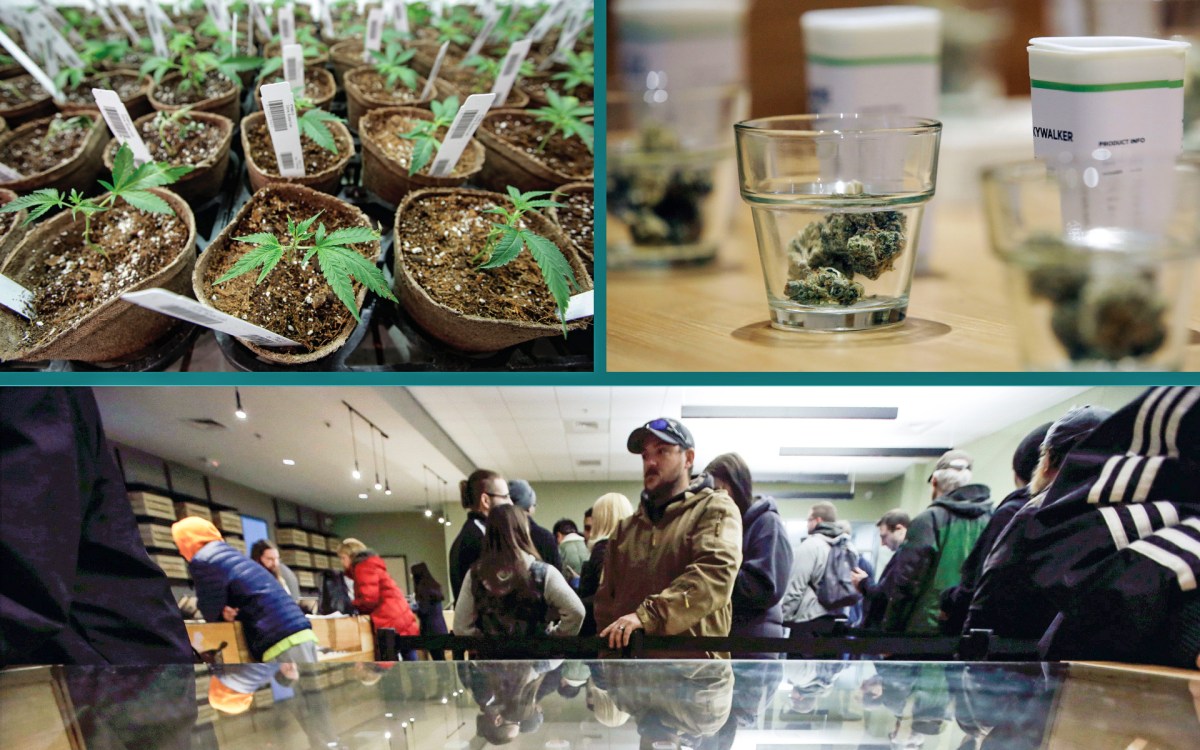First orchid fossil puts showy blooms at some 80 million years old
Pollen-bearing bee, preserved in amber, resolves longstanding dispute over orchid origins
Biologists at Harvard University have identified the ancient fossilized remains of a pollen-bearing bee as the first hint of orchids in the fossil record, a find they say suggests orchids are old enough to have coexisted with dinosaurs.
Their analysis, published this week (Aug. 29) in the journal Nature, indicates orchids arose some 76 to 84 million years ago, much longer ago than many scientists had estimated. The extinct bee they studied, preserved in amber with a mass of orchid pollen on its back, represents some of the only direct evidence of pollination in the fossil record.
“Since the time of Darwin, evolutionary biologists have been fascinated with orchids’ spectacular adaptations for insect pollination,” says lead author Santiago R. Ramírez, a researcher in Harvard’s Museum of Comparative Zoology and Department of Organismic and Evolutionary Biology. “But while orchids are the largest and most diverse plant family on Earth, they have been absent from the fossil record.”
The fossil record lacks evidence of orchids, Ramírez says, because they bloom infrequently and are concentrated in tropical areas where heat and humidity prevent fossilization. Their pollen is dispersed only by animals, not wind, and disintegrates upon contact with the acid used to extract pollen from rocks.
Orchids’ ambiguous fossil record has fed a longstanding debate over their age, with various scientists pegging the family at anywhere from 26 to 112 million years old. Those arguing for a younger age have often pointed to the lack of a meaningful fossil record as evidence of the family’s youth, along with the highly specialized flowers’ need for a well-developed array of existing pollinators to survive. Proponents of an older age for orchids had cited their ubiquity around the world, their close evolutionary kinship with the ancient asparagus family, and their bewildering diversity: Some 20,000 to 30,000 species strong, the showy plants comprise some 8 percent of all flowering species worldwide.
“Our analysis places orchids far toward the older end of the range that had been postulated, suggesting the family was fairly young at the time of the extinction of the dinosaurs some 65 million years ago,” Ramírez says. “It appears, based on our molecular clock analyses, that they began to flourish shortly after the mass extinction at the so-called ‘K/T boundary’ between the Cretaceous and Tertiary periods, which decimated many of Earth’s species.”
Orchids, unlike most flowering plants, package pollen in unique structures called pollinia, which consist of relatively large masses of compact pollen grains. The 15- to 20-million-year-old specimen of a worker bee carrying orchid pollinia, recovered by a private collector in the Dominican Republic in 2000, came to the attention of Ramírez and his colleagues at Harvard’s Museum of Comparative Zoology in 2005. While this particular species of stingless bee, Proplebeia dominicana, is now extinct, the scientists’ analysis of the shape and configuration of its cargo of pollen places it firmly within one of five extant subfamilies of orchids.
The specimen is one of just a few fossils known to illustrate directly a plant-pollinator association. The specific placement of the pollen on the bee’s back not only confirms the grains were placed through active pollination — as opposed to a random encounter with an orchid — but also sheds light on the exact type and shape of orchid flower that produced the pollen tens of millions of years ago.
By applying the so-called molecular clock method, the scientists also estimated the age of the major branches of the orchid family. To their surprise, they found that certain groups of modern orchids, including the highly prized genus Vanilla, evolved very early during the rise of the plant family.
“This result is puzzling and fascinating at the same time because modern species of Vanilla orchids are locally distributed throughout the tropical regions of the world,” says Ramírez. “But we know that tropical continents began to split apart about 100 million years ago, and thus our estimates of 60 to 70 million years for the age of Vanilla suggest that tropical continents were still experiencing significant biotic exchange much after their dramatic split.”
Ramírez’s co-authors on the Nature paper are Charles R. Marshall and Naomi E. Pierce, both professors in the Department of Organismic and Evolutionary Biology in Harvard’s Faculty of Arts and Sciences; Barbara Gravendeel of the Nationaal Herbarium Nederland in Leiden, The Netherlands; and Rodrigo B. Singer of the Universidade Federal do Rio Grande do Sul in Porto Alegre, Brazil. Their work was funded by the National Science Foundation, the Fulbright Scholar Program, and the Barbour Fund at Harvard’s Museum of Comparative Zoology.




